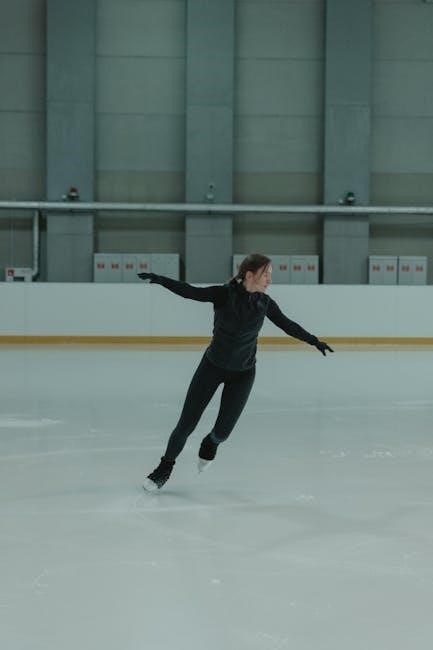Nerve desensitization exercises are designed to help manage pain and sensitivity, using techniques such as rubbing with fabrics of various textures, providing consistent stimulus to the affected area, through a specific program and routine daily;
Understanding the Concept of Desensitization
Desensitization is a process that helps the brain to get used to certain stimuli, reducing sensitivity and pain. This concept is based on the idea that the brain can adapt to new sensations and learn to ignore them. Through consistent and controlled exposure to different textures, pressures, and temperatures, the brain can rewire its response to these stimuli, leading to a decrease in sensitivity. The goal of desensitization is to help individuals manage pain and discomfort, improving their overall quality of life. By understanding how desensitization works, individuals can take an active role in their rehabilitation and work towards a more comfortable and independent life. The concept of desensitization is complex and requires a thorough understanding of the underlying mechanisms, but with the right approach and techniques, it can be a powerful tool for managing pain and sensitivity. Effective desensitization requires patience, consistency, and a well-structured program.

How Desensitization Works
Desensitization works by showering the brain with sensory input, helping it acclimate to demands, reducing sensitivity and pain through consistent stimulus and therapeutic activity, using various techniques and tools daily.
The Role of Stimulus in Desensitization
The role of stimulus in desensitization is crucial as it provides the brain with sensory input, helping it to acclimate to demands and reduce sensitivity and pain. A stimulus can be a piece of textured fabric, a brush, or an ice cube, and is used to provide consistent and frequent sensory input to the affected area. The use of different stimuli, such as various textures and pressures, helps to gradually increase the brain’s tolerance to the sensation, reducing pain and discomfort. The frequency and duration of the stimulus are also important factors in the desensitization process, as they help to determine the effectiveness of the treatment. By using a specific stimulus, individuals can help their brain to adapt to the sensation, reducing sensitivity and pain, and improving overall comfort and function. This process is essential in the treatment of nerve desensitization and is used in conjunction with other therapies to achieve optimal results.

Desensitization Exercises
Exercises involve rubbing sensitive areas with fabrics of varying textures, progressing to rougher materials, to decrease sensitivity and pain, using light pressure and gentle movements, every day.
Types of Exercises
There are several types of nerve desensitization exercises that can be used to help manage pain and sensitivity, including rubbing with fabrics of various textures, such as cotton, velvet, and terry cloth. These exercises can be done using light pressure and gentle movements, and can be progressed to rougher materials as the sensitive area becomes more comfortable. Other types of exercises may include using different temperatures, such as warm or cool water, or using vibration or massage to stimulate the area. The specific type of exercise used will depend on the individual’s needs and goals, and should be done under the guidance of a healthcare professional. Exercises can be done at home, and can be incorporated into daily activities, such as bathing or dressing. By using a variety of exercises, individuals can help to decrease sensitivity and pain, and improve their overall quality of life. Regular practice is essential to achieve optimal results.

Implementing Desensitization Exercises
Exercises are implemented through a structured program with frequent sessions, using specific materials and techniques, under guidance, to achieve desired outcomes and manage sensitivity effectively every day.
Frequency and Duration of Exercises
The frequency and duration of desensitization exercises are crucial for their effectiveness. Typically, exercises are performed every 2 hours, with each session lasting around 15 minutes. This frequent stimulation helps the brain to gradually become accustomed to the sensations, reducing sensitivity over time. The exercises should be done consistently, with the same frequency and duration, to achieve the desired outcomes. It is essential to start with shorter sessions and gradually increase the duration as the individual becomes more comfortable with the sensations. The frequency of the exercises can be adjusted based on the individual’s progress and comfort level. By following a structured program with regular exercises, individuals can effectively manage their sensitivity and achieve significant improvements in their condition; Regular exercise sessions can be incorporated into daily routine, making it easier to stick to the program and achieve long-term benefits.

Benefits of Desensitization Exercises
Desensitization exercises provide pain relief, improved sensation, and increased mobility, enhancing overall quality of life, through a gentle and non-invasive approach, with significant benefits for individuals, using simple techniques daily.
Impact on Pain Management
Pain management is a crucial aspect of nerve desensitization exercises, as they help reduce sensitivity and discomfort in affected areas. By using various textures and pressures, individuals can gradually acclimate to different sensations, leading to improved pain tolerance. The exercises have a positive impact on pain management, allowing individuals to regain control over their daily lives. Through consistent practice, individuals can experience significant reductions in pain levels, enabling them to participate in activities that were previously challenging. The exercises are a valuable tool in pain management, providing a non-invasive and gentle approach to alleviating discomfort. By incorporating nerve desensitization exercises into their daily routine, individuals can develop coping strategies and improve their overall quality of life. Effective pain management is essential for promoting healing, preventing further complications, and enhancing overall well-being. The exercises are a complementary therapy that can be used in conjunction with other treatments to achieve optimal pain relief.
